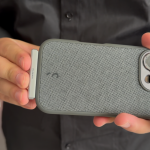
To gently land a rocket ship on the surface of Mars one must overcome the most ornery physics.
When a spacecraft returns to Earth, the relatively thick atmosphere helps slow down that speeding bullet. But on Mars, the aerodynamics are not so friendly. The atmosphere is much thinner, with the densest Martian air only about as thick as what you’ll find on Earth at 100,000 feet above sea level, more than three times the altitude of Mount Everest’s peak.
Of over 40 missions sent to Mars, fewer than half have been successful, according to NASA.
And they want to send people there?
“I call it the anti-Goldilocks atmosphere,” said Jim Reuter, NASA associate administrator for the space technology mission directorate. “It’s thick enough that it causes you problems and not thin enough to help you.”
But space scientists think they’ve figured out how to pull more drag out of literal thin air.
Engineers have developed new hardware — an inflatable heat shield — that might be the key. Called a Hypersonic Inflatable Aerodynamic Decelerator, or HIAD, the technology could help NASA land astronauts and massive cargo loads on the Red Planet in the late 2030s.
Now a team at the space agency’s Langley Research Center in Virginia is ready to test its mettle in space. Earlier this week, scientists and engineers gathered to see the heat shield inflated for the final time on Earth before it shoots into orbit on a United Launch Alliance Atlas V rocket in November.
The mission, known as the Bernard Kutter Low-Earth Orbit Flight Test of an Inflatable Decelerator — LOFTID for short — will take the experiment up with a weather satellite on a trip around Earth that passes over the North and South poles. The heat shield will stay put until after the satellite’s delivery, then will inflate as the spacecraft returns to Earth.
At a small demo on Wednesday, the gunmetal-gray-shrouded heat shield, looking like a giant mushroom cap, ballooned out in a cavernous laboratory. The contraption was 20-feet-wide, about the size of a small carousel, with a catwalk stretched overtop for scientists and engineers to cross it.

Credit: Elisha Sauers
Since NASA began in 1958, the agency has relied on rocket engines and rigid aeroshell heat shields to land spacecraft. The aeroshell is a protective cover, shielding the lander from the scorching heat of reentry.
From the first crewless Viking mission in the 1970s to NASA’s most recent Curiosity rover launched in 2011, engineers have used the same heat shield technology to get to Mars.
But the classic technology is limiting. A hard aeroshell can only be as big as the diameter of a rocket’s nose cone, which holds the lander. The larger the aeroshell, though, the heavier the loads can be. For sending astronauts to Mars, scientists say they’ll need to land about 20 to 45 tons. So far, they’ve only landed less than two tons on the Martian ground.
Reliance on the old method has also constrained spacecraft landings to Mars’ northern lowlands, below the base elevation level on the Red Planet, said Joe Del Corso, the project manager at Langley.

Credit: NASA
“I call it the anti-Goldilocks atmosphere.”
That’s how an inflatable heat shield could come in handy.
The system is composed of a stack of inner-tube-like rings strapped together. Its synthetic material is 15 times stronger than steel and able to withstand temperatures over 2,900 degrees Fahrenheit. The idea is to deploy it higher up in Mars’ atmosphere, expanding NASA’s touchdown options throughout the Martian southern highlands.
It’s a more realistic solution than bundles of parachutes the size of football fields or tens of extra tons of rocket fuel, the experts said.
“With classic technology, you can land about 1.5 metric tons. That’s the equivalent of a well-instrumented golf cart,” Del Corso told Mashable. “With 20 to 40 metric tons, we’re talking about a ranch house, fully furnished with a car in the carport. That’s what you have to have.”

Credit: NASA
The $93 million mission is a partnership with United Launch Alliance, which will provide the ride and the recovery of the NASA equipment after the launch. The rocket will take off from Vandenberg Space Force Base in California. If all goes according to plan, the heat shield will slow down the LOFTID vehicle from over 25 times the speed of sound to under 610 mph.
The inflated system will then separate and splash down into the Pacific Ocean with a parachute near Hawaii. During the descent, it will eject a data recorder storing information about the flight that a boat will retrieve from the water.
There’s something in the mission for ULA, too. The new heat shield technology could help them recover spent boosters for reuse, said Barb Egan, the company’s civil space program director, referring to a notoriously expensive aspect of space travel. The business hopes to one day use it for its Vulcan heavy-lift rocket, whose thrusters make up about 60 percent of each launch cost.
“This is a giant leap in aeroshell technology,” Egan said, “to be able to bring our engines back quickly, easily, safely, and reuse that technology rather than throw it away.”
Powered by WPeMatico





